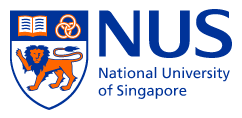ONDL announces graphene breakthrough at Crystal & Graphene Science Symposium
7 Dec 2012. Prof Lay-Lay Chua was invited to address the Crystal & Graphene Science Symposium this year, which focused on the most exciting advances in graphene science and technology. She announced the success of her team at ONDL to develop a new graphene transfer method that allows chemical-vapor-deposited (CVD) graphene sheets to be transferred with integrity and registration onto arbitrary surfaces, including those of fragile polymer thin films.
CVD graphenes are commercially available as single layers of graphite, called graphene, grown on large metallic foils often of copper. The quality of these graphene sheets on their supporting foils can be rather good. However the transfer of these out of their support and onto fragile substrates, such as those having a pre-patterned film of a polymer or other materials, without damaging either the atomically-thin graphene or the structures at the destination substrate, has been a phenomenal challenge. This challenge has previously hampered the worldwide effort to integrate graphenes into a wide variety of new applications. However Prof Chua’s team has now overcome this through developing a new concept of solvent release layer. Her team demonstrates there can now be transferred from their growth substrates onto truly arbitrary hydrophilic and hydrophobic surfaces, including those of other polymer films that are just a few tens of nanometres thick, without damage. As examples of new applications that are now opened up, her team has also demonstrated new graphene hybrids in ultrathin capacitors and low-voltage organic field-effect transistors, which were not previously possible. She has also announced the world’s first artificial graphite intercalation compound.
Other speakers at this symposium includes Prof Charles Lieber from Harvard University, Prof Paul Steinhardt from Princeton University, Dr Matthew Copel from IBM Thomas J Watson Research Centre, Prof Arthur Hebard from University of Florida, and Prof Antonio Castro-Neto, the director of the new Graphene Research centre at NUS.
|
